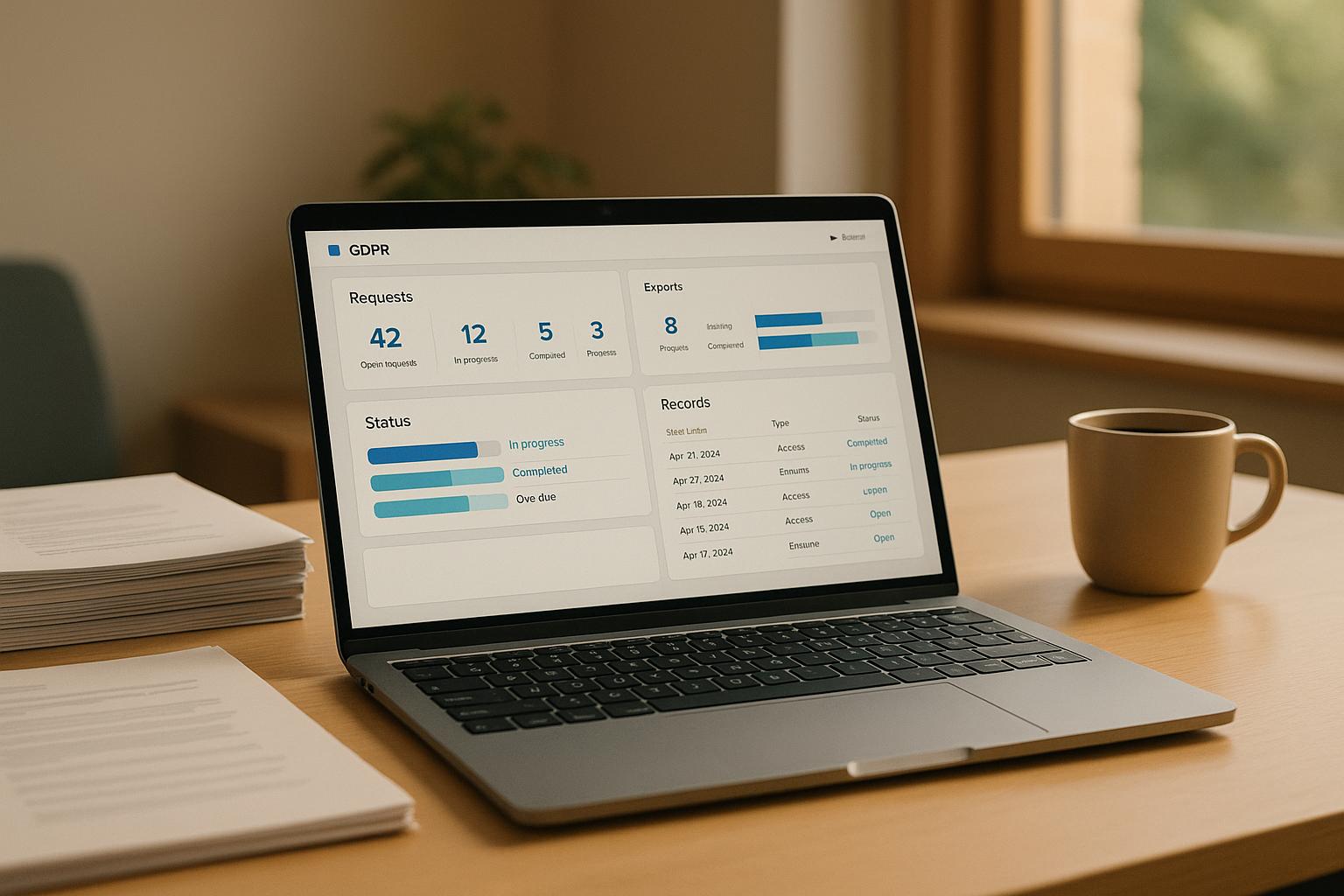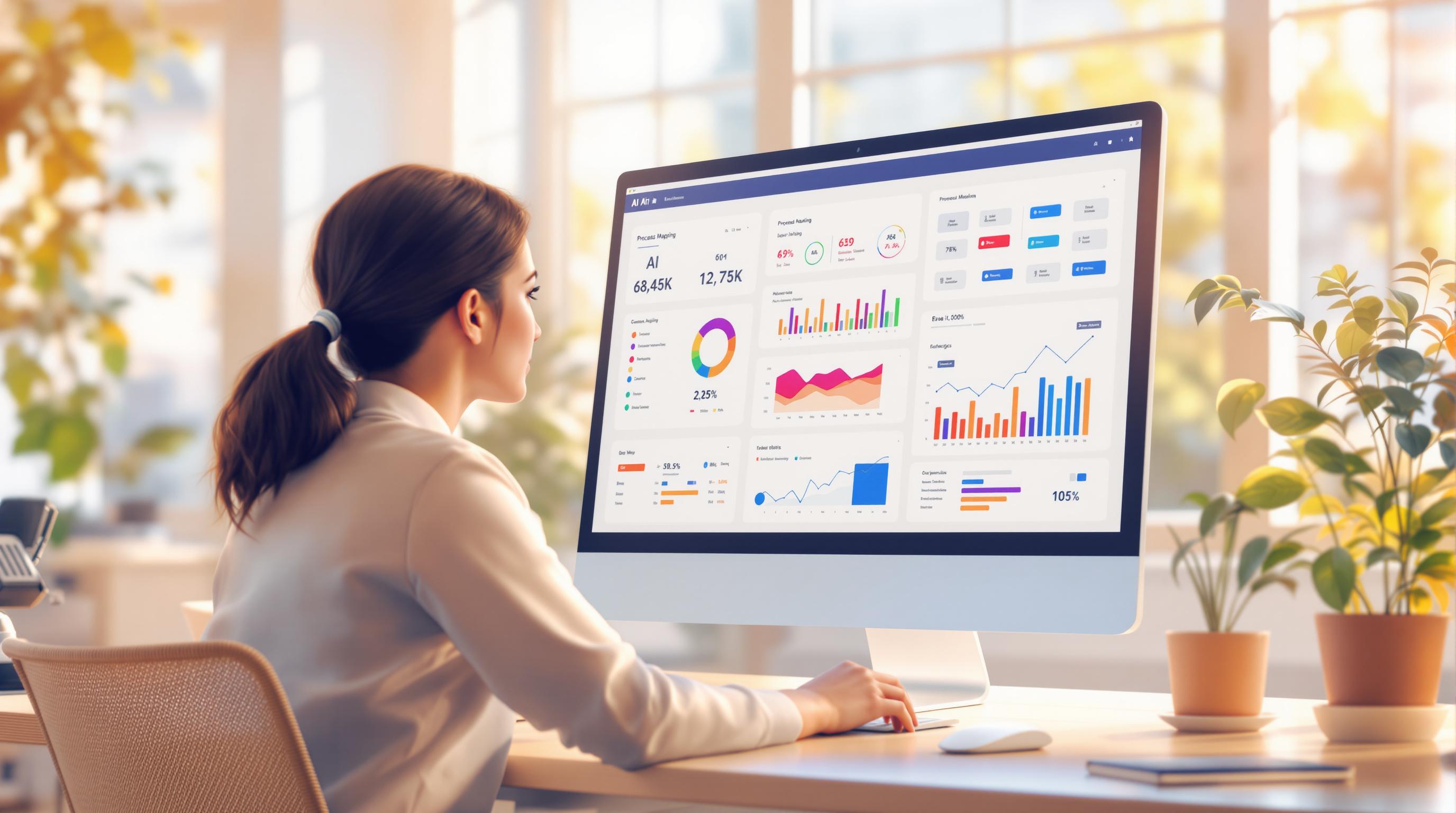Spam accounts for over 50% of all email traffic, costing businesses billions in lost productivity and security risks. Choosing the right spam filtering method - unsupervised or semi-supervised - can significantly improve email security and efficiency. Here's a quick breakdown:
- Unsupervised Learning: Uses patterns in unlabeled data to detect spam. No manual labeling required. Best for large datasets with no labeled examples.
- Semi-Supervised Learning: Combines a small labeled dataset with a large pool of unlabeled data. Offers higher accuracy and adaptability but needs some initial human input.
Quick Comparison
| Aspect | Unsupervised Learning | Semi-Supervised Learning |
|---|---|---|
| Data Requirements | Unlabeled data only | Labeled + unlabeled data |
| Labeling Effort | None | Minimal |
| Accuracy | Moderate | Higher |
| Adaptability | Identifies patterns | Learns from new data |
| Best Use Case | No labeled data available | Some labeled data exists |
Key takeaway: If you lack labeled data, go with unsupervised methods. If you can label even a small dataset, semi-supervised methods offer better accuracy and performance.
How Machine Learning Is Used To Filter Spam Emails | LSE

Unsupervised Spam Filtering Explained
Unsupervised spam filtering operates by analyzing patterns in emails without relying on pre-labeled data. Instead of requiring manual input, these systems automatically detect hidden patterns, making them well-suited for identifying new spam threats as they emerge.
How Unsupervised Learning Works
Unsupervised methods thrive in dynamic environments by continuously adjusting to evolving spamming tactics. These systems leverage the fact that spam campaigns, often driven by automated tools and templates, produce recognizable patterns. Since template-based spam reduces variation, spam emails tend to look more alike compared to legitimate ones. For instance, the system can flag a surge of emails with repetitive phrases like "limited time offer" as potential spam.
A prime example of this approach is Gmail's spam filtering system. Google uses unsupervised machine learning techniques to evaluate factors such as IP addresses, bulk sender authentication protocols, and domain-related data [9, 13]. The system employs clustering to group similar emails and anomaly detection to identify messages that deviate from standard patterns. This combination allows it to efficiently detect both established spam types and new threats, often in real time, ensuring spam campaigns are caught as soon as they appear.
Pros and Cons of Unsupervised Methods
One major advantage of unsupervised spam filtering is that it doesn’t rely on labeled data. Unlike traditional supervised systems, which require extensive human effort to manually label emails, unsupervised methods bypass this time-intensive and costly step [11, 14]. They are also adept at spotting new spam patterns, as they aren't constrained by pre-existing examples.
In practice, these systems can be highly effective. For example, one study reported an unsupervised spam filter achieving a false negative rate of 3.5% and a false positive rate as low as 0.4%. Some implementations have even reached up to 98% accuracy. However, there are challenges. Without labeled data, results can sometimes be subjective, capturing irrelevant patterns or noise instead of genuine spam indicators.
Another challenge lies in validation. Without a clear benchmark or "ground truth", it’s difficult to measure performance quantitatively. Fine-tuning system parameters can also be a demanding task, requiring significant expertise. Additionally, legitimate emails - such as newsletters or announcements - may occasionally be misclassified as spam because of their resemblance to spam campaign templates.
Semi-Supervised Spam Filtering Explained
Semi-supervised spam filtering blends a small, labeled dataset with a large pool of unlabeled emails to train models more effectively. This hybrid approach fills the gap between supervised and unsupervised methods, offering businesses a practical way to manage spam without the daunting task of labeling thousands of emails by hand.
Unlike unsupervised methods, which work independently to find patterns, semi-supervised techniques use a curated set of labeled emails to fine-tune their accuracy.
How Semi-Supervised Learning Works
Semi-supervised learning starts with a small batch of manually labeled emails (categorized as spam or legitimate) and uses patterns in a much larger set of unlabeled emails to improve its performance. The process typically involves several techniques:
- Self-training: The model labels unlabeled emails based on its most confident predictions, then retrains using this new data.
- Co-training: Multiple models are trained on different email features. These models label each other's data, improving spam detection.
- Graph-based methods: Emails are represented as nodes in a network, with links connecting similar messages. Labels are then spread across the network based on these similarities.
This approach operates on two main assumptions: that emails naturally cluster by type (the cluster assumption) and that similar emails tend to share the same labels (the smoothness assumption).
Pros and Cons of Semi-Supervised Methods
Semi-supervised methods build on the insights of unsupervised learning while addressing some of its limitations by incorporating labeled data. For businesses, this approach offers several advantages. One standout benefit is its cost-efficiency - companies can achieve high levels of accuracy without the need to manually label massive volumes of emails. As Dremio highlights:
"Semi-Supervised Learning provides a balance between the high accuracy of supervised learning and the cost-effectiveness of unsupervised learning." - Dremio
The results can be impressive. For instance, a study on opinion spam classification found that a self-training algorithm using Naive Bayes achieved 93% accuracy. Another strength of semi-supervised methods is their ability to adapt to evolving spam patterns. Once trained, the models can identify similar patterns in new, unlabeled emails. A 2018 study even demonstrated that performance improves as the amount of unlabeled data increases.
However, these methods are not without challenges. Data quality is crucial - introducing unlabeled data from irrelevant categories can harm performance, sometimes making it worse than using only labeled data. Additionally, semi-supervised models depend heavily on the initial labeled dataset. If this dataset doesn’t represent the full spectrum of spam types, the system may struggle to handle new variations. Ongoing monitoring and expert oversight are essential to ensure continued accuracy.
sbb-itb-bec6a7e
Direct Comparison: Unsupervised vs Semi-Supervised
Now that we've broken down the individual strengths of these methods, it's time to put them side by side. When it comes to spam filtering, businesses need to weigh factors like accuracy, resource demands, and scalability to decide which approach best fits their needs. Each method has its own perks and limitations that can shape your email security strategy.
Accuracy and Performance Differences
When comparing performance, the gap between these two methods is striking, especially in terms of accuracy. Semi-supervised approaches tend to outperform unsupervised ones because they use even a small amount of labeled data to guide the learning process. For example, Google's machine learning models have achieved an impressive 99.9% accuracy in detecting and filtering spam and phishing emails.
Unsupervised learning, on the other hand, excels at spotting patterns in large-scale spam campaigns, such as shared keywords or phrases. But it struggles with more nuanced or evolving spam tactics, where semi-supervised methods shine. Semi-supervised learning benefits from labeled data, making it easier to evaluate performance using standard metrics like accuracy, precision, recall, and F1 scores. In contrast, unsupervised learning often requires human interpretation to assess its success, which can be less precise.
Resource Needs and Scalability
Resource requirements are another critical factor when choosing between these methods. Unsupervised learning can be computationally demanding, as it processes large volumes of unlabeled data without guidance. The upside? It doesn’t require human effort for labeling. Semi-supervised learning, however, strikes a middle ground. By using a small set of labeled data along with a larger pool of unlabeled data, it reduces the burden of labeling while still maintaining strong performance.
Scalability also sets these methods apart. Unsupervised learning can adapt to new data patterns but may require periodic fine-tuning as spam tactics evolve. Semi-supervised learning is somewhat adaptable too, improving as new labeled examples are added alongside the large pool of unlabeled data. Fully supervised systems, while highly accurate, are far more labor-intensive and expensive due to the need for extensive labeled datasets. Semi-supervised methods help ease this workload, making them a more practical choice for many businesses.
Comparison Table: Key Differences
| Aspect | Unsupervised Learning | Semi-Supervised Learning |
|---|---|---|
| Data Requirements | Unlabeled data only | Small labeled dataset with large unlabeled pool |
| Labeling Effort | None required | Minimal initial effort |
| Accuracy | Moderate; subjective evaluation | Higher with objective metrics |
| Adaptability | Identifies common spam patterns | Improves with new labeled examples |
| Computational Complexity | High due to large datasets | Intermediate complexity |
| Human Intervention | Minimal during operation | Initial labeling required |
| Performance Evaluation | Relies on human interpretation | Uses metrics like accuracy, precision, recall, and F1 scores |
| Best Use Case | When labeled data is unavailable | When some labeled data can guide learning |
For businesses, where spam accounts for a staggering 56.87% of global email traffic, choosing the right spam filter isn't just a technical decision - it’s a critical one. The right choice depends on your specific resources and performance needs, and it can have a lasting impact on the effectiveness of your email security.
Implementation Guide for Businesses
Setting up spam filtering doesn’t have to be overly complicated or expensive. Even smaller businesses can achieve solid email security without needing a team of tech experts.
How to Choose the Right Method
Start by assessing your email traffic. If your business processes thousands of emails daily, you’ll need a more robust system than a business dealing with just a few hundred.
Next, think about your resources for labeling data and your budget. Manual data labeling can drain both time and money, so many businesses find semi-supervised learning to be an ideal middle ground - it balances costs while still providing strong performance.
Also, consider your IT team’s familiarity with machine learning. If expertise in this area is limited, semi-supervised learning is often a practical choice. It offers better accuracy than unsupervised methods without requiring advanced technical skills.
Choose a method that aligns with your data volume and labeling capacity. For example, if you’re handling massive datasets but lack the resources to label them, unsupervised learning can help identify patterns. On the other hand, semi-supervised learning works well if you can label at least part of your data, offering a better mix of precision and cost-effectiveness.
Make sure the chosen solution integrates seamlessly with your current email systems. Poor integration can lead to missed threats or important emails being mistakenly blocked .
Lastly, factor in your budget. Many business-grade spam filters start at about $1 per user per month. Considering that managing spam without a filter can cost around $285 per person annually, investing in email security is a smart financial move.
Once you’ve outlined your needs, the next step is selecting an AI tool that fits your criteria.
Working with AI Tools
With your requirements in place, finding the right AI tool becomes much simpler. Today, specialized platforms make implementing AI-powered spam filters easier than ever, bridging the gap between advanced tech and everyday business tasks.
Take AI for Businesses, for example. This platform offers a curated directory of AI tools tailored for small and medium-sized enterprises. Beyond spam filtering, it includes tools like Looka, Rezi, Stability.ai, and Writesonic. By presenting reliable, pre-vetted options, it saves businesses the hassle of sifting through countless tools.
When it comes to spam filtering, cost and performance matter. AI for Businesses offers a free Basic plan, a Pro plan for $29/month, and customizable Enterprise solutions, making it accessible for businesses of all sizes.
Cloud-based spam filters are another excellent option. They’re easy to set up and highly effective. For instance, SpamTitan boasts a spam catch rate of 99.99%. As Lior Mizrachi, CTO at Genie Support, put it, "SpamTitan has nearly eliminated email virus risks, streamlining our support for hundreds of companies".
Look for solutions that can evolve with your business. Many AI-powered platforms provide scalable options, regular updates to tackle new spam tactics, customizable settings, and detailed reporting to track performance .
Finally, don’t underestimate the importance of implementation support. The best directories don’t just list tools - they also guide you through integration and optimization, ensuring your spam filter runs smoothly and adapts to your needs over time.
Key Takeaways
Here’s a quick rundown of the main points from our analysis. Your decision between unsupervised and semi-supervised spam filtering boils down to email volume, labeling resources, and technical know-how.
- Evaluate your email volume: If you’re dealing with a huge influx of emails and lack the resources to label them, unsupervised learning is your best bet. However, if you can label even a small portion of your emails, semi-supervised learning strikes a good balance and can deliver stronger results.
- Match the method to your technical skills: Unsupervised approaches often need fine-tuning, while semi-supervised methods combine a small amount of labeled data with plenty of unlabeled data. This makes semi-supervised options a solid choice for teams without deep machine learning expertise.
- Weigh the financial impact of spam: Spam accounts for 56.5% of emails and costs businesses around $20.5 billion annually. Having a reliable spam filter isn’t just helpful - it’s essential.
- Tailor your choice to your goals and resources: Think about your email volume, your ability to label data, and your objectives for the filter. Effective spam filters can block over 90% of spam, making it worth the effort to choose wisely.
Finally, test any solution with a trial period to ensure it meets your performance expectations and integrates smoothly into your system.
FAQs
How does the quality of the initial labeled dataset affect the performance of semi-supervised spam filters?
The quality of the initial labeled dataset is key to the success of semi-supervised spam filtering. This dataset serves as the starting point for the model to learn patterns and differentiate between spam and legitimate messages.
When the labeled dataset is carefully prepared, the model gains accurate examples to work with, resulting in more dependable performance. Models trained on high-quality data often deliver superior accuracy, outperforming those built on poorly labeled or limited datasets. For businesses, prioritizing a well-prepared initial dataset can significantly enhance spam detection accuracy and minimize false positives.
What are the risks of using only unsupervised methods for spam filtering?
Relying solely on unsupervised spam filtering methods can come with its own set of hurdles:
- High false positives: Legitimate emails might get flagged as spam, leading to missed important messages.
- Struggles with adaptation: These methods have a hard time keeping up with new and evolving spam techniques since they don't rely on labeled examples to learn.
- Lower accuracy: Unsupervised models can be thrown off by noisy data or outliers, which can affect their dependability.
While unsupervised filtering has its place, pairing it with semi-supervised or supervised techniques often delivers stronger, more reliable results - especially for businesses managing a high volume of emails.
How can businesses choose between unsupervised and semi-supervised spam filtering while balancing cost and accuracy?
To manage costs while ensuring accuracy, businesses should evaluate their specific spam filtering requirements and the availability of labeled data. One practical solution is semi-supervised learning, which uses a small amount of labeled data combined with a larger pool of unlabeled data. This method helps cut down on the expense of data labeling while still delivering reliable accuracy. It's particularly helpful in situations where labeled data is scarce, but maintaining high accuracy is critical.
On the other hand, unsupervised methods don't depend on labeled data, making them a more budget-friendly and low-maintenance option. However, this approach may come at the cost of some precision. For tasks where a balance between flexibility and strong performance is needed, semi-supervised learning often stands out as the most effective choice, making it a popular option for spam detection.


